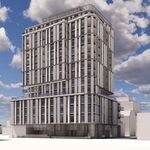Translude15
Frank the Tank
The social life of those who drive those cars to U of T carries out at places north of 401, or more so, north of Steeles.
I don't know what you guys are basing these presumptions on, but the majority of U of T students driving higher end luxury vehicles live in nice condo units in the downtown core. These are international students whose parents have the financial wherewithal to not only pay for higher tuition rates, but a condo and nice car to boot.
Besides BMWs you see kids driving Ferraris, Lamborghinis, Maseratis, Porsches, Aston Martins, etc. all over U of T campus.




